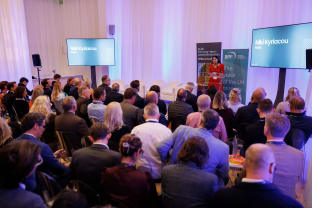
How does the UK BTR model compare with the US and Europe? The US is a decade or more ahead of the UK in this growing area – so what lessons can we learn from this?
Build to Rent (BTR) in the UK is here to stay, and that’s a good thing. You only have to glance at the property pages in the papers recently to see concerning reports about the British private rental sector contracting. As recently as last month we saw the BBC reporting the number of homes available to rent in the UK has fallen by a third over the past 18 months.
BTR providers are working hard to fill that gap, and not just in the capital. We’re increasingly seeing other major cities across the UK embracing the BTR model with hotspots in Manchester and Birmingham setting the pace for development.
But how does the UK BTR model compare with the US and Europe? How has it evolved differently? Everyone in the sector knows the US is a decade or more ahead of the UK in this growing area, but all markets cater differently depending on cultural norms – so what lessons can we learn from this?
The US reimagined the home in the 2010s. Developers and investors saw the opportunity for customers who wanted to rent not only a home, but a lifestyle complete with a community, shared spaces and amenities. Affordable housing programmes are less common in the US and a growing demand for rented homes at all levels drove BTR around the states. The cities of Houston, Tucson, Phoenix and Las Vegas have seen the biggest investment in the model, with Columbus, Dallas and Kansas more recently adding to the BTR trend.
BTR in the US has been a success because it carved out a new market for itself and now there are individuals, couples and families actively choosing the concept as a preference, not as a second best to home ownership. The multi-family offering is also growing as student debt and rising living costs makes renting more accessible than buying for young families, and single or coupled generation zed and millennials enjoy the increased flexibility BTR developments offer.
America promoted the benefits of a professionally managed home and community well. The concept has survived, and even thrived, post COVID-19 thanks to increasing numbers of people working from home.
The US is undisputedly a pioneer in this field and showed the rest of the world how it could be done – what’s been interesting to observe is how other countries have run with the idea but developed it to suit their own markets. That’s why there’s no standard BTR model – it varies according to local tastes, national regulations and cultural influences.
Built to Rent is well suited to continental Europe, perhaps better than the UK, given rates of home ownership in relation to those renting is much lower than here. Germany is undoubtedly the leader in mainland Europe - private rental accommodation accounts for almost 50 percent of the total housing market but other markets have been emerging too.
Spain for example has seen a growing trend towards the model in recent years – despite most of the population still living in owned accomodation. After the economic downturn of 2008, there was an increase in adult children living with parents, but the younger demographics are now preferring to strike out on their own, fuelling the rental markets. With a congested housing market and challenges for younger buyers around mortgage rates, investors have identified a gap in the market perfectly filled by the BTR concept.
Unsurprisingly it’s the major conurbations like Madrid and Barcelona that have benefitted from the boom most, with a growing focus on sustainability and energy efficiency. Even with an increase in younger generations renting themselves, multi-generational living is still prevalent in Spain, meaning BTR homes with more bedrooms and different designs, aimed at family life, are common; in the UK, smaller single bedroom apartments or developments aimed at young professionals are more common.
As the UK rental market contracts there may be lessons to learn about family-orientated integrated community BTR models – building developments designed for all ages to live together, with complimentary amenities and facilities to hit different demographics could be the next big opportunity for investors.
Scandinavia is a very different BTR market as compared to the likes of the UK, US and much of continental Europe. Homeownership rates are high and relatively more affordable compared to many markets, but the likes of Sweden, Norway and Denmark also have some of Europe’s highest percentages of one-person households.
Sweden has a particularly strong BTR market, which in 2019 saw volumes rise by over 40%. The Nordics naturally lend themselves to the BTR model, given the strong social conscience found in these countries. The idea of communities nurtured and grown, with a sense of duty to neighbours and wider society makes for shared services, spaces and facilities an ideal option for many citizens. Scandinavian BTR developments often feature green spaces and outdoor amenities. Legacy, ESG and sustainable practice is incorporated from concept and is a key selling point for renters of all generations. These countries also appreciate design-led developments and internal and external aesthetics are carefully considered. Biophilic design, bringing the outside in, and putting nature at the heart of such planned communities is much more prevalent than in the UK and US.
Many countries can learn from the Nordics and the way BTR in these nations has developed, with lessons learned from the hospitality sector in planning and ergonomics. Scandinavia has a strong heritage in architecture and design and is undoubtedly leading the way in contemporary living and beautiful spaces.
BTR is a solid choice for investors in all markets – whether aimed at multi-family, multigenerational, single family or single dwellers it’s a growing sector. Renters want more than just a home to live in, but a community of likeminded people, whether they’re of the same social and economic demographic or not. The increasingly wider mix of BTR options available is opening up the market to more people, and it’s being viewed as a real alternative to the old-style property ladder. With the private rental sector becoming increasingly competitive BTR developments will be a welcome addition to most major towns and cities.
Niki Kyriacou, Sector Lead - BTR at NHBC said
'BTR is growing around the world as investors and developers recognise the benefits of offering this flexible solution in increasingly tight property markets. Not everyone wants to own a home and prefer the lifestyle and amenities BTR offers. NHBC is an ideal partner for developers and investors active in the UK BTR space, offering unrivalled expertise and experience in the sector, helping you build it right first time.'
Latest articles

Unlocking brownfield sites for mixed tenure development

NHBC’s third annual BTR Innovators event looks to the future of the sector

The Construction CITB Levy explained: what employers need to know
